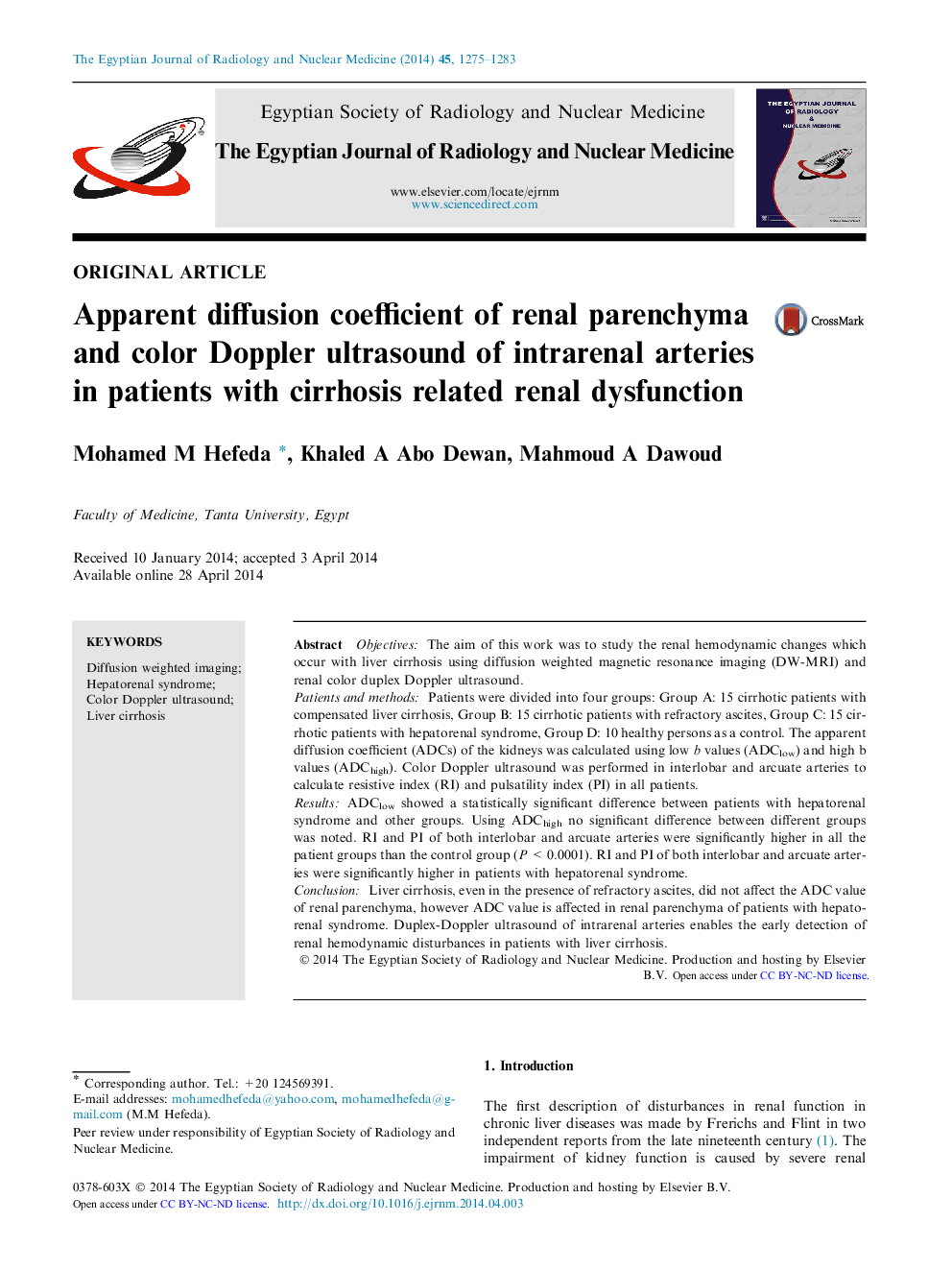| Article ID | Journal | Published Year | Pages | File Type |
|---|---|---|---|---|
| 4224321 | The Egyptian Journal of Radiology and Nuclear Medicine | 2014 | 9 Pages |
ObjectivesThe aim of this work was to study the renal hemodynamic changes which occur with liver cirrhosis using diffusion weighted magnetic resonance imaging (DW-MRI) and renal color duplex Doppler ultrasound.Patients and methodsPatients were divided into four groups: Group A: 15 cirrhotic patients with compensated liver cirrhosis, Group B: 15 cirrhotic patients with refractory ascites, Group C: 15 cirrhotic patients with hepatorenal syndrome, Group D: 10 healthy persons as a control. The apparent diffusion coefficient (ADCs) of the kidneys was calculated using low b values (ADClow) and high b values (ADChigh). Color Doppler ultrasound was performed in interlobar and arcuate arteries to calculate resistive index (RI) and pulsatility index (PI) in all patients.ResultsADClow showed a statistically significant difference between patients with hepatorenal syndrome and other groups. Using ADChigh no significant difference between different groups was noted. RI and PI of both interlobar and arcuate arteries were significantly higher in all the patient groups than the control group (P < 0.0001). RI and PI of both interlobar and arcuate arteries were significantly higher in patients with hepatorenal syndrome.ConclusionLiver cirrhosis, even in the presence of refractory ascites, did not affect the ADC value of renal parenchyma, however ADC value is affected in renal parenchyma of patients with hepato-renal syndrome. Duplex-Doppler ultrasound of intrarenal arteries enables the early detection of renal hemodynamic disturbances in patients with liver cirrhosis.
